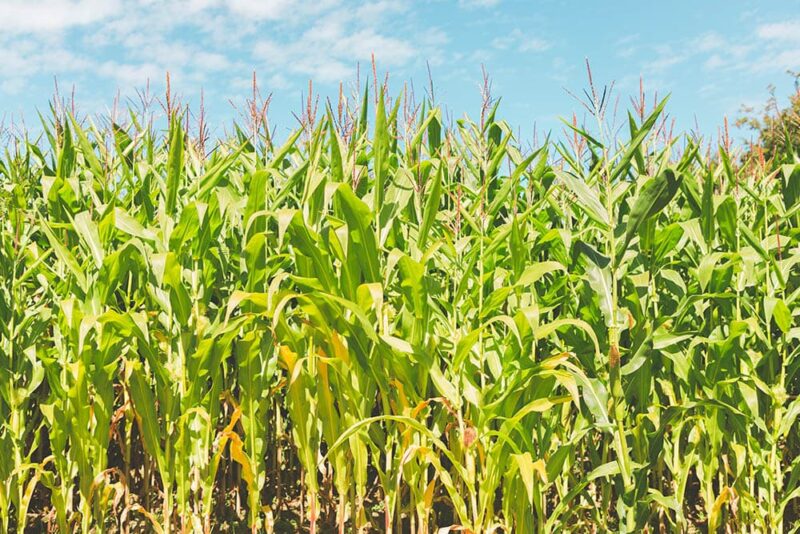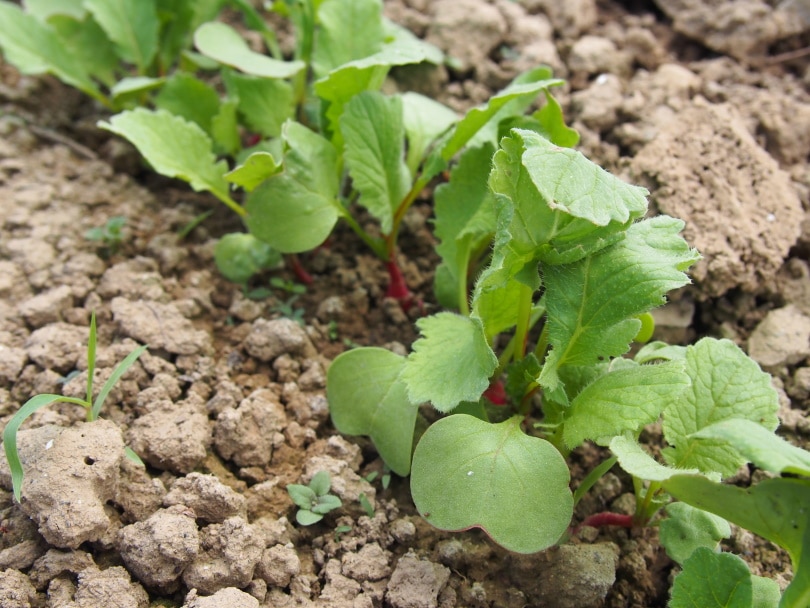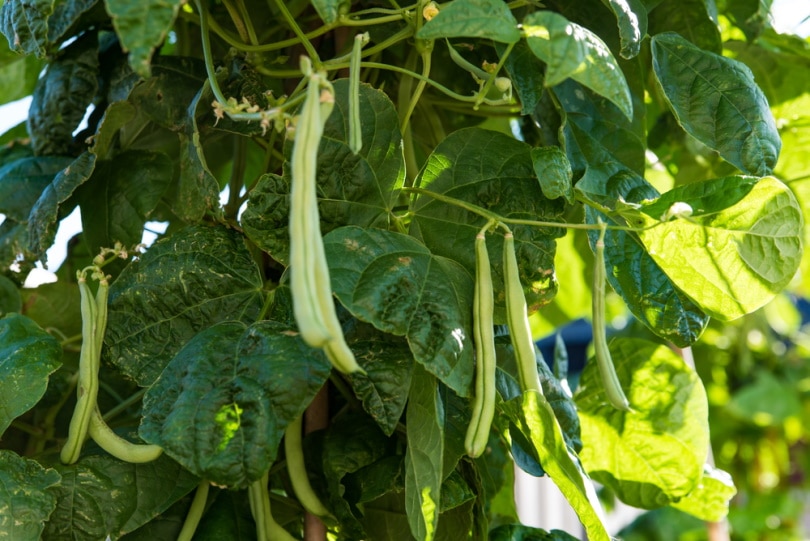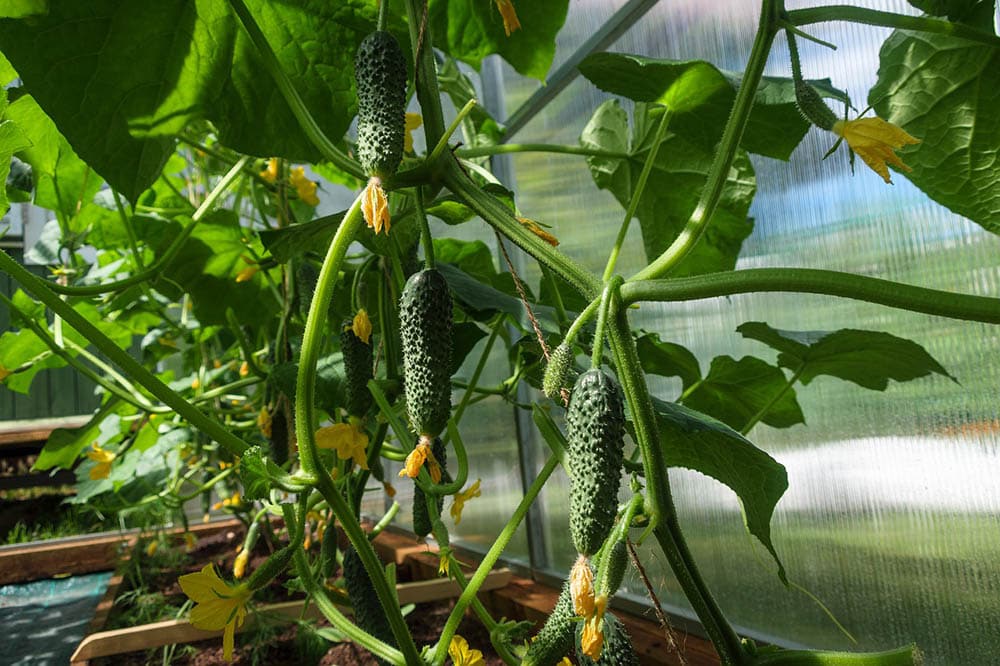10 Companion Plants for Growing Corn (with Pictures)
-

- Last updated:

Companion planting is a great way to help your crops grow stronger, healthier, and taller. This is because most companion plants help conserve moisture in the soil, add nutrients, and prevent the ground from overheating. You should, however, note that not all plants can be companions; some have adverse effects on some crops when grown in the same area.
If you want the best corn from your garden, you should consider growing it with some companion plants. In this article, we’ll cover 10 ideal companions for corn, their purpose, and what at intervals to grow them.

Benefits of Companion Planting
Companion planting is all about pairing certain plants and crops together for maximum benefit. Some plants attract pollinators, while others repel pests and prevent the plants from contracting some diseases. With corn, companion planting enables you to save space.
When plants grow, they take a lot of nutrients from the soil, which leaves the gardener with a lot of work at the end of the season. Well, some companion plants add nutrients to the ground, which helps the soil remain rich in nutrients and thus supporting healthy plants. Corn plants also benefit other plants; for example, they act as an ideal trellis for cucumbers and other plants in the same growing space.
The 10 Companion Plants for Corn
1. Basil

| Scientific name | Ocimum basilicum |
| Growing pattern | On the perimeter |
| Benefit | Prevents weevils from attacking the corn |
Planting basil around the corn field or next to the corn garden repels weevils and other pests, which ensures the grain will be healthy. Keep in mind that weevils eat the corn kernels when the maize is still in the garden, affecting the end product. So, for extra benefit, pluck one or two basil leaves often, rip them into small pieces and scatter them around the base of each maize stalk.
2. Potatoes

| Scientific name | Solanum tuberosum |
| Growing pattern | Between the maize crops |
| Benefit | Adds nutrients to the soil |
Planting potatoes in the same space as corn makes use of the extra space. Corn and potatoes utilize different nutrients in the soil and, therefore, can co-exist. Your corn and potatoes will get increased yield from reducing the susceptibility to some potato diseases.
Corn also offers the potatoes significant protection from the harsh sun enabling them to grow to maturity. Ensure you plant the potatoes once the corn develops young ears and cut it down around the potatoes after harvesting the corn.
3. Pumpkins

| Scientific name | Cucurbita moschata |
| Growing pattern | Next to the corn |
| Benefit | Acts as natural mulch |
Pumpkins are a traditional choice to grow with corn since they serve as mulch and prevent the soil from overheating, especially during summer. The vines also provide ground cover, which prevents weeds from growing and therefore conserves soil moisture and nutrients.
They also deter small animals and rodents from approaching the corn and eating the grains. It’s easy to plant pumpkins since all you need are the seeds; plant them next to the corn plants and let the vines spread.
4. Radishes

| Scientific name | Raphanus sativus |
| Growing pattern | Next to the corn |
| Benefit | Deters pests such as beetles and weevils |
These root vegetables can keep weevils and corn borers from your plants when planted next to the corn plants. They produce a scent that most pests find unappealing. The best part is that radishes are an easy crop to grow, and they mature pretty quickly in under 30 days. If you want to have radishes as companion plants for your corn until it matures, ensure you use succession planting methods.
5. Pole Beans

| Scientific name | Phaseolus vulgaris |
| Growing pattern | A couple of inches from the corn |
| Benefit | Offers support to the maize stalk |
Pumpkins, corn, and pole beans are the three sisters’ planting trio and have been implemented by farmers for hundreds of years. The relation between the pole beans and the corn is mutually beneficial; the pole beans climb on the stalk of the corn plant to access sunlight and, while doing so, also stabilize the corn plant and prevent it from falling over when the cob matures.
There are different varieties of pole beans, and you need to do your research before picking the variety to grow with your corn. “Rattlesnake” pole beans are the best to grow since they can quickly wind around the corn stalks and don’t weigh much.
6. Dill

| Scientific name | Anethum graveolens L |
| Growing pattern | A few inches from the corn |
| Benefit | Attracts pollinators |
Dill is an aromatic herb, thus attracting pollinators such as bees and butterflies to your garden and increasing the yield. It also keeps pest levels down. It’s easy to plant and care for, and you can plant it in succession to ensure it’s there until the corn matures.
Ensure you plant dill directly between the rows of maize since it doesn’t transplant well. Although it does not require particularly rich soils to grow and flourish, it needs extra water and fertilizers, which is similar to the growing conditions of corn.
7. Mint

| Scientific name | Mentha piperita L |
| Growing pattern | Around the corn perimeter |
| Benefit | Repels animals that eat growing corn |
The aroma produced by mint repels grazing animals such as goats and deer that feed on the growing corn. Mint takes a short time to grow and has several uses around the home. The shade from the corn also prevents it from wilting due to exposure to the hot sun.
8. Nasturtiums

| Scientific name | Tropaeolum majus |
| Growing pattern | A short distance away from the corn |
| Benefit | Repels pests |
Nasturtiums are beautiful flowers; however, most people avoid planting them since they attract aphids. When planted a short distance away from the corn, the aphids are drawn to them and don’t attack the corn. They also attract pollinators such as butterflies and bees, thus increasing yields.
9. Cucumber

| Scientific name | Cucumis sativus |
| Growing pattern | A few inches from the corn |
| Benefit | Keeps the soil moist |
Cucumbers are vine plants and work the same way as squash and pumpkin. Plant them a few inches from the corn with enough space for the vines to spread. The vines spread out and provide ground cover for the corn, which prevents weeds from growing and keeps the soil moist.
Cucumbers are easy to care for and take a short period to mature—about 2 months. For maximum benefit, consider growing them in succession until the corn matures.
10. Marigolds

| Scientific name | Tagetes erecta |
| Growing pattern | A few inches from the corn |
| Benefit | Repels pests |
Marigold is a popular choice for a companion plant since it repels many pests, including aphids and weevils. Planting them around your corn plants ensures they won’t be attacked by any pests or even some small rodents.

Plants to Avoid
Just as there are good companion crops to grow alongside corn, some inhibit corn’s capability to grow properly.
- Tomatoes: Tomatoes typically use a lot of water to grow and compete with corn for the available water resources. They are also targets for the corn earworm and the tomato hornworm. Growing them in close proximity can attract these pests in greater numbers.
- Eggplant: Eggplants are also targeted by the tomato hornworm, which also attacks corn, and planting them in close proximity can attract these pests even more.
- Fennel: Fennel does not grow well with most other vegetables and is not recommended as a companion crop for corn. Although it attracts pollinators, it also acts as an inhibitor to other plants and stunts their growth.
Conclusion
Companion planting is one of the most effective ways of creating a harmonious garden. Now that you know the plants that can be planted with corn and their purposes, you can enjoy a well-balanced garden and achieve high crop yields. Ensure you get your seeds and seedlings from a trusted source to avoid spreading diseases to your garden.
Featured Image Credit: Henry Barnes, Unsplash
Contents


